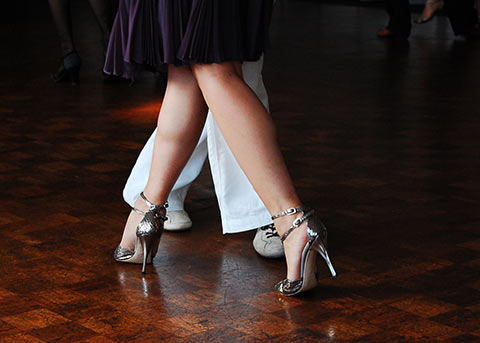
Being “light on your feet” when dancing is not entirely true; dancing the night away can take a toll on feet and ankles. If you enjoy dancing, don’t let foot injuries stop the show, be sure to protect your feet and ankles.
The most common types of dance-related foot and ankle problems are overuse injuries, which occur due to the repetitive movements in dance. Over 50 percent of dance injuries occur in the foot and ankle. The severity of the damage is often determined by a dancer’s age, strength and flexibility and the type of shoes worn when dancing.
Other common types of injuries related to dancing can include:
- Stress fractures (hairline breaks in the bone) from repeated jumping and landing.
- Foot neuromas (thickening/irritation of the nerves in the ball of the foot) resulting from repetitive pivoting.
- Shin splints (pain and swelling in the front of the lower legs) which can be aggravated by recurring activities.
- Tendonitis (inflammation of the tendons in the foot) from over exertion.
- Corns, calluses or blisters—all painful skin irritations resulting from repeated rubbing of the skin on the feet.
What’s the best defense to protect your feet and ankles?
- Wear appropriate shoes to properly support your feet and ankles.
- Perform dance moves that best fit your skill level.
If you do suffer an injury, it is important to make an appointment with our office as soon as possible. Prompt medical attention by a foot and ankle surgeon can make all the different in a proper rehabilitation. Most dance injuries can be treated with conservative care as long as they are not ignored. Don’t dispel foot pain even if you can walk on it; remember it is possible to walk on a seriously injured foot. Common injuries, if left untreated, may require surgical intervention to ensure proper healing.